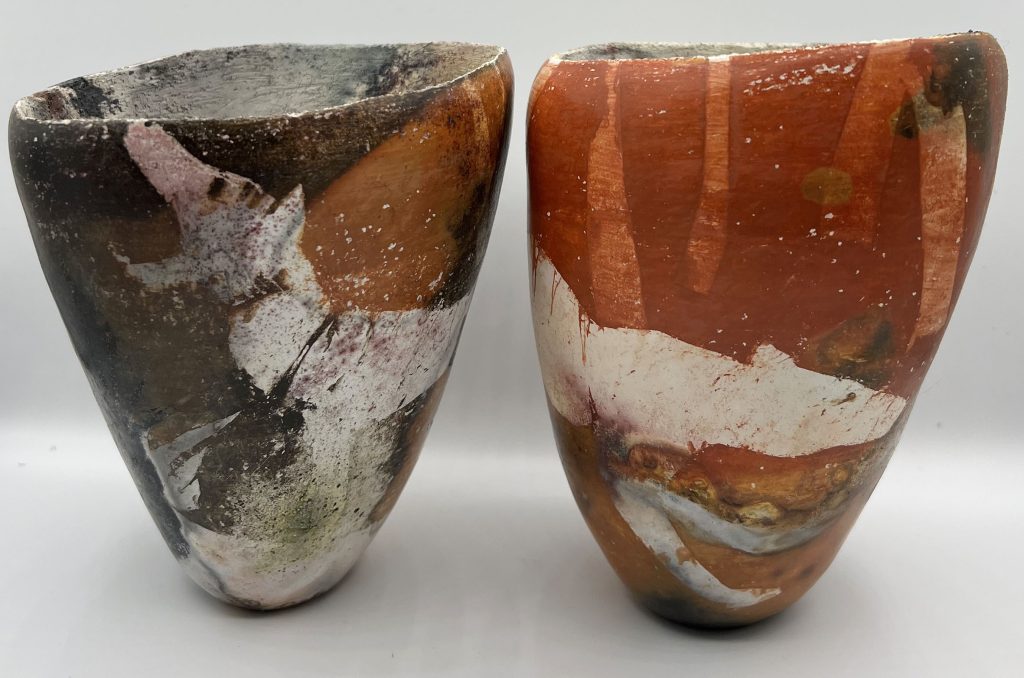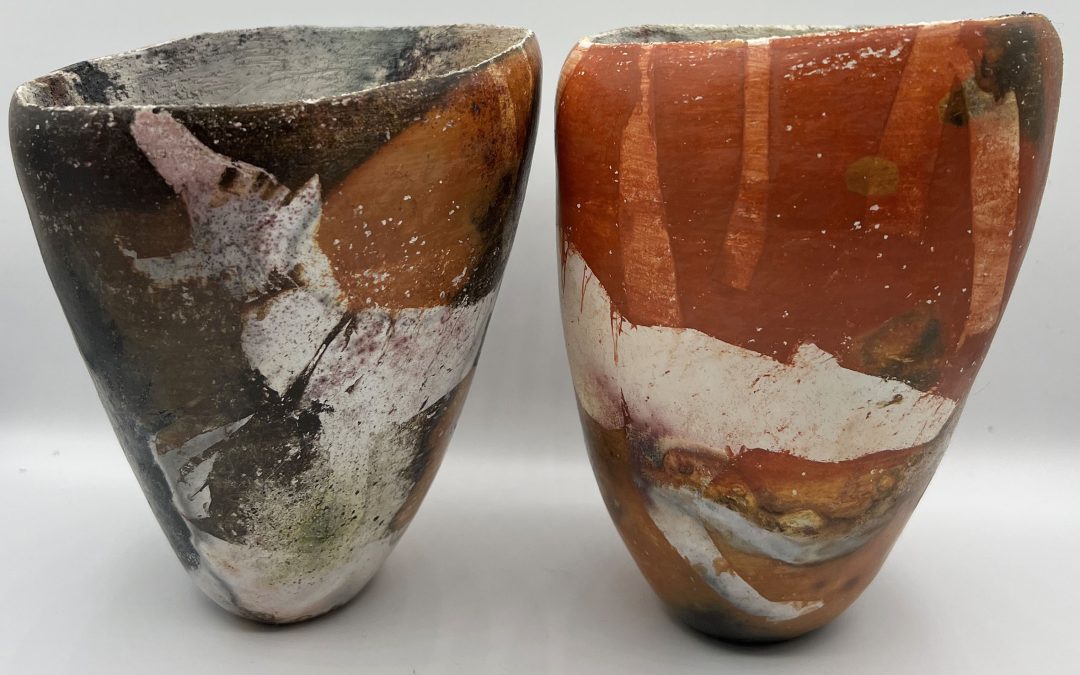Interview with Sara Pane by Jude Muduioa

Lost Tigers by Sara Pane (photo supplied by the artist).
Ceramic Arts Queensland is delighted to be hosting 2023 Siliceous finalist Sara Pane for a workshop where she will share her specialist skills in printmaking and ceramics. In this short interview I asked Sara about her approach to creative practice and how this informs her work.
How would you describe your practice?
My visual arts practice in ceramics and print-making is process-based. By this I mean that my final works are arrived at through a process of experimental making, driven by key elements of the story I wish to tell. When I initiate a series of works, I don’t have a clear vision of how they will visually develop. Instead, I engage in investigative processes that eventually reveal answers to aesthetic questions.
For example, the making of the Lost Tigers pots began on trips back to the Tasmanian wilderness during a phase of living in my hometown of Brisbane. I would cloister myself away in the shed on our family farm (Melukerdee country) with some clay and a few basic tools. I focused on making pinch pots, seeing how far I could push the clay to develop organic forms. These, I fired in a brick-lined pit, experimenting with the effects of burning different organic materials collected from the environment – cow poo, gum nuts and leaves, bones, and rusted metal.
Living and creating on this country, I was constantly exposed to views of forested hills and the Huon River – landscapes haunted by the ghosts of the extinct apex predator, the thylacine. The Tasmanian tiger or wolf as it was called by European colonizers, was supposedly extinct by the 1930s due to habitat erosion, disease, and persecution. However, continued unconfirmed sightings suggest its extinction occurred much later in remote parts of the Island. This beast’s iconic role in Tasmanian history certainly caught my imagination, the result being that images of thylacines began to creep across the surface of my pots. Eventually I engaged printmaking principles to work monochromatic tiger imagery onto the pots.
I completed these vessels through a pit firing process, which produced atmospheric effects that evoke the ghostly presence of the thylacine,
materializing within a landscape of smoke, mist, and shadow. Spectral aesthetics and post-indexical strategies have been of particular interest to me since completing my printmaking honours project – Spectral Landscape: A Resurrection Of Diasporic Experience Through Postmemory And Printmaking, 2015. Post-indexical strategies are defined in Making Memories Matter as:
…a logic that allows for a particular kind of engagement with the
subject of history, or, even more pointedly, the subject of historical
trauma. It is a logic in which the subject of representation is at once
absent yet present… (Saltzman 2006, p. 53)
Post-indexical strategies were employed in the tiger works through using an absence of pigment to define the tiger form, as opposed to the surrounding landscape, alongside the obscuring effects of fume and smoke marks.
Can you share a little about the journey to your current practice?
I’ve always been a maker both in terms of objects and marks. I have a vivid memory of drawing on walls with coral pink lipstick as a very young child. As a result of this, my astute parents made sure I had constant access to drawing materials and appropriate drawing surfaces.
I studied ceramics at TAFE in Brisbane in the early 90s but didn’t have the confidence to pursue a career as an artist. My ceramics practice fell by the wayside. I moved to Tasmania in 2008 and lived in the “wilds” (a term used by my youngest child) for a decade. During this time, I completed a Bachelor of Fine Arts at UTAS with honours, majoring in printmaking.
I found myself disconnected from wild places when I moved back to Brisbane in 2018 and this, along with the onslaught of the pandemic, drove me to reconnect with ceramics. I remember that pungent earthy smell the first time I opened a bag of clay after 25 years of ceramic abstinence. God it was good. Creating ceramic objects and vessels was an antidote to feeling hopeless in the face of environmental changes and challenges.
What are your philosophical influences and inspirational artists?
Of long-standing interest, and one which has certainly been piqued more recently, is the philosophical arguments and aesthetics of the Arts and Crafts movement (1880-1920s) in Europe and North America. Flora and fauna themes, “truth to materials”, commitment to process through all stages of design and production, and how all this creates connectedness to life and the human spirit has underpinned my approach to making objects that have meaning and the maker’s mark.
The ceramic artists who inspire me include Danish artist Gertrud Vasegaarde (1913 to 2007) and British ceramicist John Ward (1938 to 2023). I am drawn to Japanese aesthetic principles, such as wabi-sabi, and particularly love the elemental and ritualistic process of raku firing.
Sara’s workshop Experiments in Printmaking on Ceramics will be held at the Brisbane Institute of Art on 20 July, 2024. Book via our website: ceramicartsqld.org.au/events/
To learn more about Sara and her work visit her website sarapane.com and Instagram @studio_gloam
The article was first published in the CAQ Quarterly Bulletin, June 2024.

